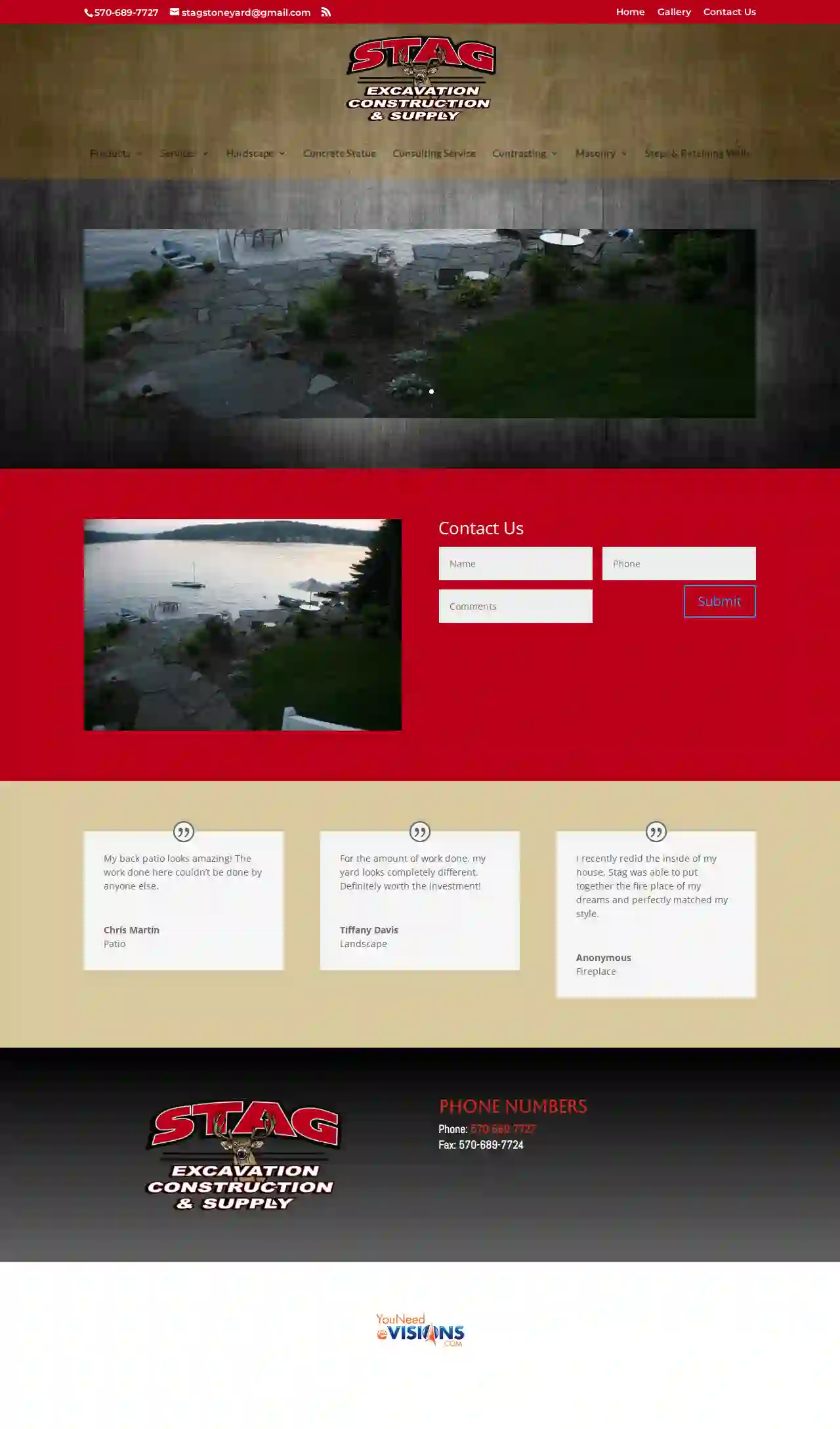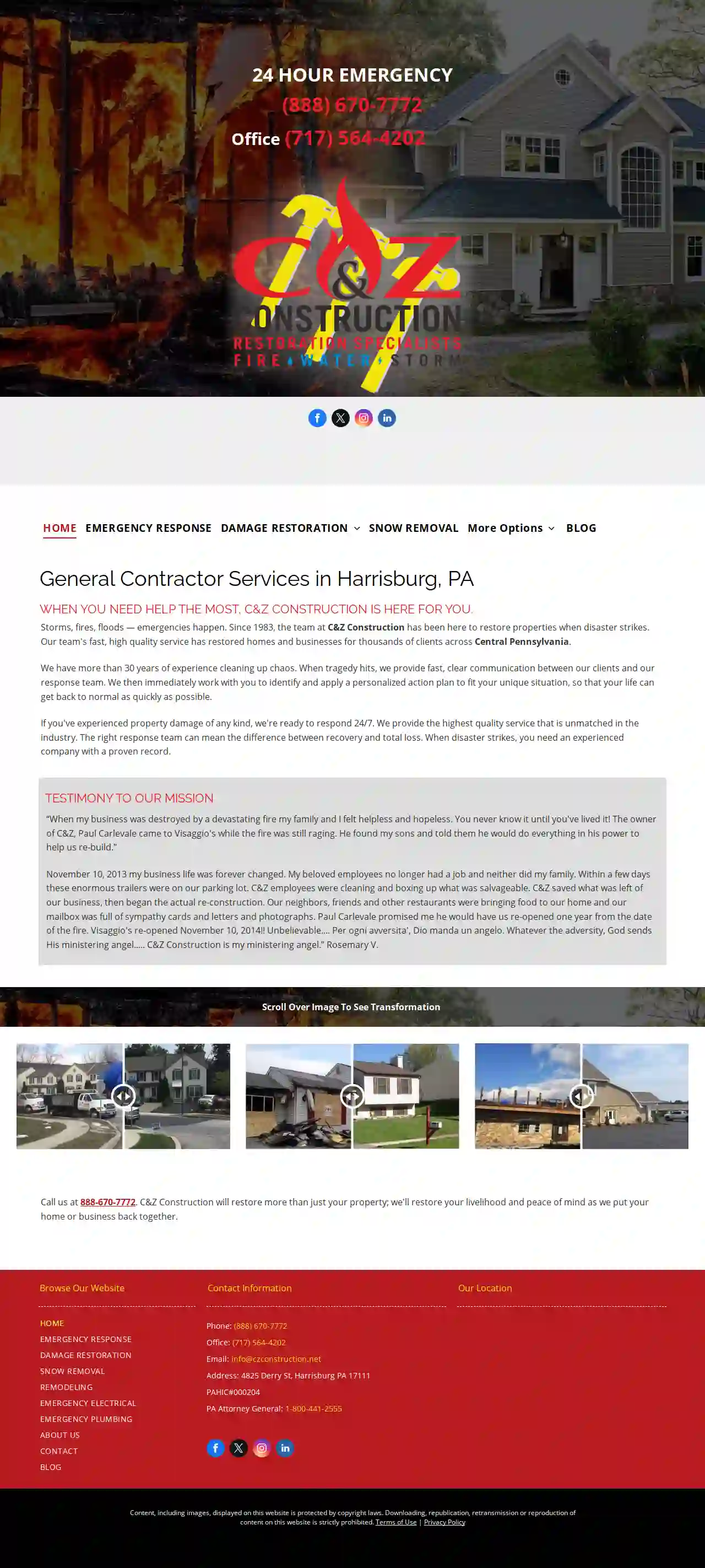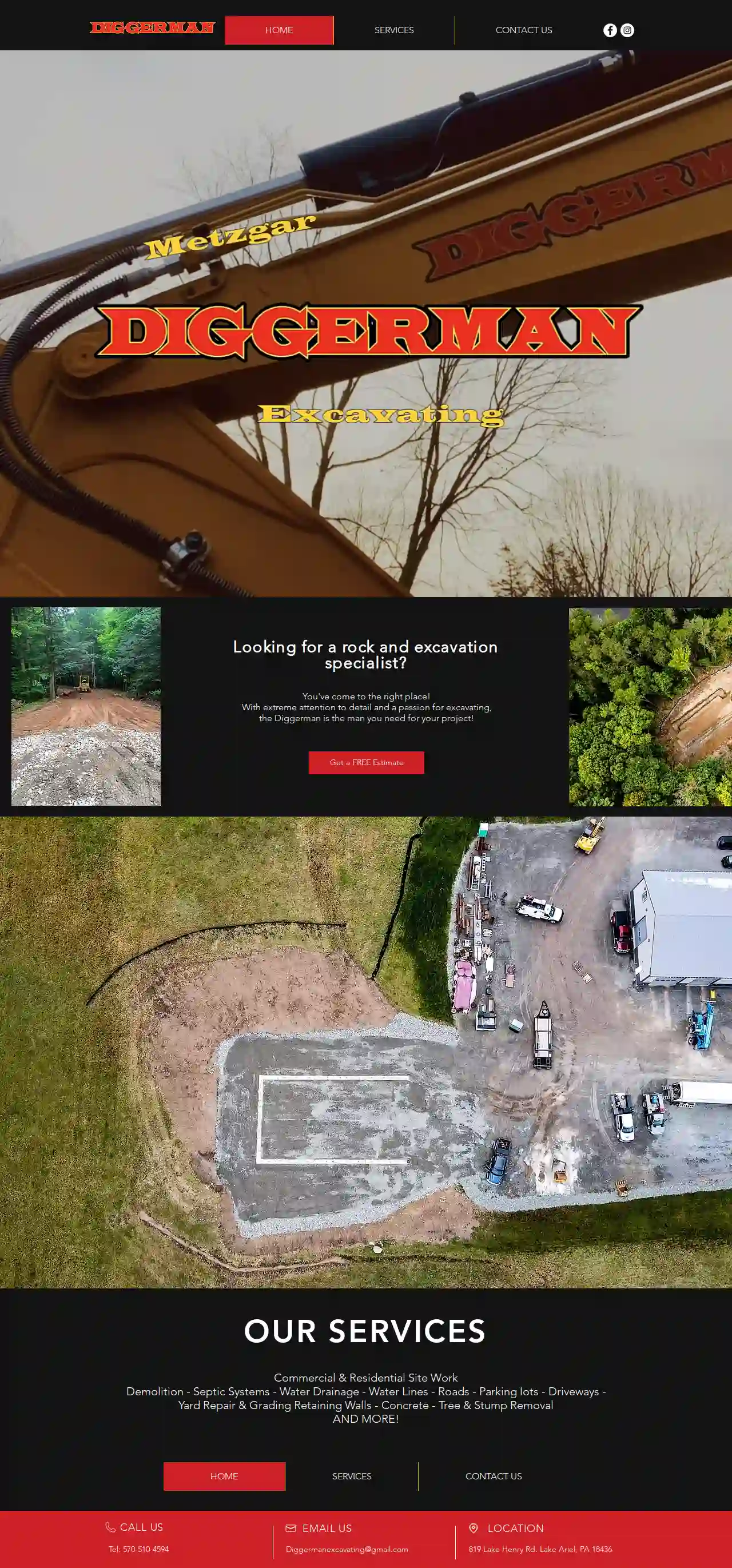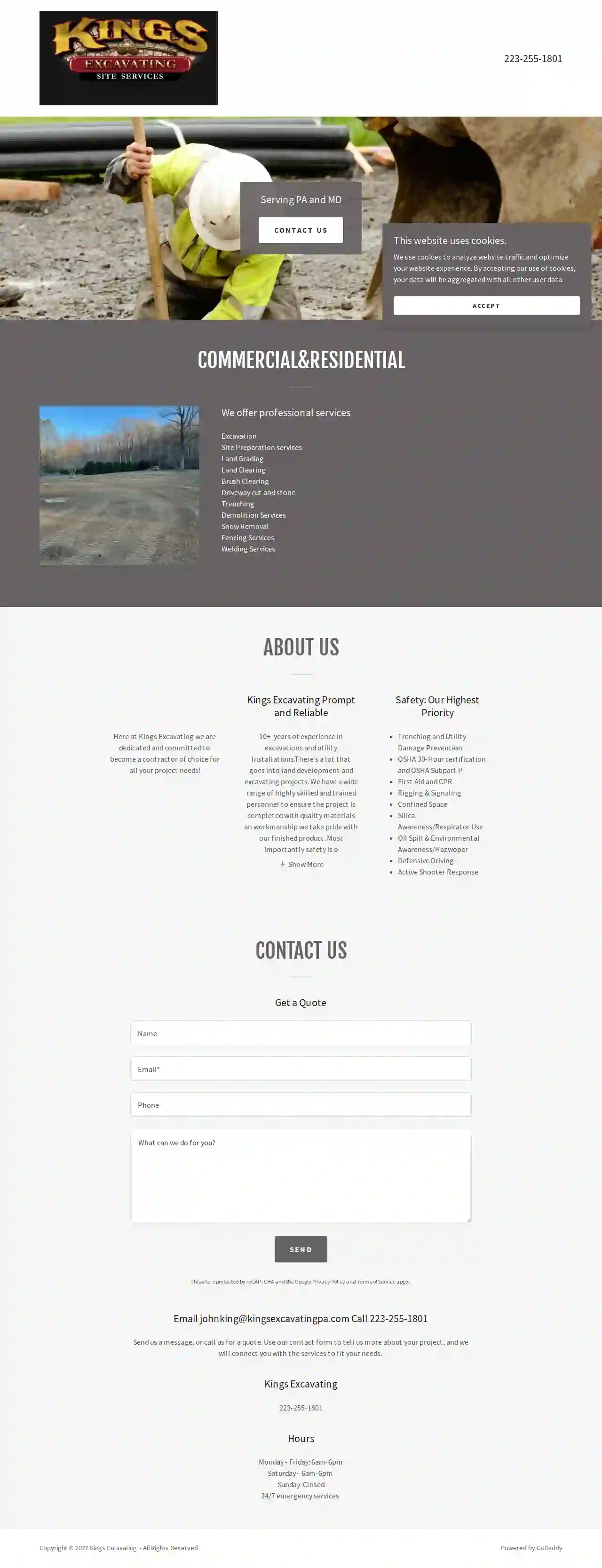Demolition Contractors Hampton
Find Demolition Company Near Me in Hampton
Receive up to 3 Demolition Experts quotes for your project today! Compare profiles, reviews, accreditations, portfolio, etc... and choose the best service.

Smith Excavating LLC
521 reviewsHarrisburg, 62946, USExcavation Services When the people in our community need the expertise and professional oversight of an excavation contractor, they know to contact Smith Excavating LLC. Whether you need someone to clear the land on a worksite, dig out a pond, or excavate for a home foundation, we can help you. Homeowners and skilled builders alike look to us for all their excavating needs—and the reasons why are obvious. Whether you’re most concerned with quick turnarounds, reasonable rates, or excellent results, you will surely love our approach to excavation. Book our services today for your upcoming project. Call (618) 499-2594 to schedule your consultation. Making Excavation Look Easy We are high-demand excavation contractors. Not a day goes by where we are not doing earthwork, digging trenches, or aiding the development of a new property. Over the years, we have come to understand the finer points of excavation better than the rest. We Serve the Customer We work in accordance with the standards of our trade, make no mistake. That said, we also believe in serving the customer every step of the way. We will listen to your requests, answer your questions, and address any concerns you might have. In the end, you get quality results and a customer experience like no other. Ready for Every Excavation Project Do you want to dig out a pond in the backyard of your home? Are you looking to clear a piece of property of large rocks and other masses? We can help you. Between our unparalleled expertise and vast storehouse of equipment, we can undertake just about any excavation project. Some of the services we offer include: Basement excavation Pond digging and filling Site clearing Trenches and troughs Foundation digging Grading And more Aiding Residential and Commercial Excavation Projects Since our company’s inception, we have had the opportunity to assist in projects of all varieties, from home building to commercial landscaping and everything in between. We tackle projects of all sizes—and what’s more, we treat every project with the seriousness it deserves. Would you like to learn a little more about us? Call our offices today.
- Services
- Why Us?
- Testimonials
- Gallery
Get Quote
Stag Excavation Construction & Supply
52 reviewsHamlin, USStag Excavation & Stone Yard Stag Excavation & Stone Yard is a family-owned and operated business serving the Hamlin, PA area. We offer a wide range of services, from excavating and demolition to hardscaping and custom home construction. We are committed to providing our clients with high-quality workmanship and exceptional customer service. Our team of experienced professionals is dedicated to exceeding your expectations and delivering projects on time and within budget. We are proud to be a trusted name in the community and look forward to serving your needs. We are located just outside of Hamlin Corners in Hamlin PA. We offer free estimates on all of our services. Contact us today to schedule a consultation.
- Services
- Why Us?
- Testimonials
- Gallery
Get Quote
William Lawrence Excavating & Trucking
4.36 reviewsScranton, USAbout William Lawrence Excavating & Trucking William Lawrence Excavating and Trucking Company is a locally owned and operated business serving both residential and commercial clients in Montrose, PA for over 35 years. We take pride in our modern and well-maintained equipment, operated by a qualified, courteous, and reliable crew. Our commitment to safety is reflected in our fully insured operations. Whether you're planning a large or small project that requires excavating or trucking services, we offer free assistance in the planning stage and a free evaluation to help you find the most cost-effective methods available. We believe in delivering exceptional service and ensuring your project is completed to the highest standards. At William Lawrence Excavating & Trucking, we stand by our motto: "If We Start It…We Complete It!"
- Services
- Why Us?
- Gallery
Get Quote
C&Z Construction
4.332 reviews4825 Derry St, Harrisburg PA, Harrisburg, 17111, USWhen you need help the most, C&Z Construction is here for you. Storms, fires, floods — emergencies happen. Since 1983, the team at C&Z Construction has been here to restore properties when disaster strikes. Our team's fast, high quality service has restored homes and businesses for thousands of clients across Central Pennsylvania. We have more than 30 years of experience cleaning up chaos. When tragedy hits, we provide fast, clear communication between our clients and our response team. We then immediately work with you to identify and apply a personalized action plan to fit your unique situation, so that your life can get back to normal as quickly as possible. If you've experienced property damage of any kind, we're ready to respond 24/7. We provide the highest quality service that is unmatched in the industry. The right response team can mean the difference between recovery and total loss. When disaster strikes, you need an experienced company with a proven record. TESTIMONY TO OUR MISSION “When my business was destroyed by a devastating fire my family and I felt helpless and hopeless. You never know it until you've lived it! The owner of C&Z, Paul Carlevale came to Visaggio's while the fire was still raging. He found my sons and told them he would do everything in his power to help us re-build." November 10, 2013 my business life was forever changed. My beloved employees no longer had a job and neither did my family. Within a few days these enormous trailers were on our parking lot. C&Z employees were cleaning and boxing up what was salvageable. C&Z saved what was left of our business, then began the actual re-construction. Our neighbors, friends and other restaurants were bringing food to our home and our mailbox was full of sympathy cards and letters and photographs. Paul Carlevale promised me he would have us re-opened one year from the date of the fire. Visaggio's re-opened November 10, 2014!! Unbelievable.... Per ogni avversita', Dio manda un angelo. Whatever the adversity, God sends His ministering angel..... C&Z Construction is my ministering angel.” Rosemary V.
- Services
- Why Us?
- Testimonials
- Gallery
Get Quote
Four Bridges Construction & Renovations
131 Main St, Staten Island, 10307, USAbout Four Bridges Construction & Renovations At Four Bridges, we are residential and commercial contractors serving Staten Island and the Tri-State Area. We bring a unique blend of vision and experience, both as building designers and builders, allowing us to offer valuable insight and advice to help you design your dream home, remodel, or addition. We handle site development, planning, zoning, and navigate any hurdles you might encounter in your building project. We stay abreast of the latest construction trends to ensure your project is built with the highest quality and efficiency. Let our years of experienced designing and building work for you.
- Services
- Why Us?
- Gallery
Get Quote
Diggerman Excavating
819 Lake Henry Rd., Lake Ariel, 18436, USLooking for a rock and excavation specialist? You've come to the right place! With extreme attention to detail and a passion for excavating, the Diggerman is the man you need for your project!
- Services
- Why Us?
- Gallery
Get Quote
Bayside Excavation & Hauling
522 reviewsMillington, USBayside Excavation & Hauling: Your Trusted Partner for Excavation and Hauling Services in Millington, MD Bayside Excavation & Hauling is a leading provider of excavation and hauling services in Millington, MD, serving Caroline, Kent, Queen Anne's, and Talbot counties. With decades of experience and a commitment to excellence, we offer a comprehensive range of services to meet your needs, whether you're a homeowner, contractor, or business owner. Our team of experienced professionals is dedicated to providing personalized service and high-quality results. We understand that every project is unique, and we work closely with our clients to ensure that their needs are met. We are committed to safety, efficiency, and customer satisfaction. What sets us apart? **Decades of Experience:** Our team boasts over 100 years of combined experience, ensuring that every project benefits from seasoned insights, innovative solutions, and unparalleled skill. **Comprehensive Services:** We offer a wide range of services, including excavation, hauling, land clearing, demolition, and septic system installation and repairs, providing a one-stop solution for all your excavation and hauling needs. **Personalized Approach:** We prioritize personalized service tailored to each client's unique needs and project specifications. From initial consultation to project completion, we work closely with clients to understand their objectives, offer expert advice, and deliver results that exceed expectations.
- Services
- Why Us?
- Gallery
Get Quote
Kings Excavating
Pittsburgh, USKings Excavating: Prompt and Reliable Here at Kings Excavating, we are dedicated and committed to becoming your contractor of choice for all your project needs! With over 10 years of experience in excavations and utility installations, we have a wide range of highly skilled and trained personnel to ensure your project is completed with quality materials and workmanship. We take pride in our finished product, and most importantly, safety is our number one priority. We strive to create a safe working environment for our employees and the public throughout every project. Safety: Our Highest Priority We prioritize safety in all our operations, adhering to the highest industry standards. Our team is equipped with the necessary certifications and training to ensure a safe and efficient work environment. Our commitment to safety includes: Trenching and Utility Damage Prevention OSHA 30-Hour certification and OSHA Subpart P First Aid and CPR Rigging & Signaling Confined Space Silica Awareness/Respirator Use Oil Spill & Environmental Awareness/Hazwoper Defensive Driving Active Shooter Response
- Services
- Why Us?
- Gallery
Get Quote
I & I Excavating Inc.
57 reviewsNiagara, USHistory Welcome to I and I Excavating Inc, your premier destination for exceptional excavation and concrete services. Boasting over three decades of industry experience, our skilled team of professionals is devoted to delivering top-notch solutions tailored to your concrete needs. Catering to both homeowners and business owners, our comprehensive suite of services includes concrete driveways, sidewalks, patios, and innovative drainage solutions. At I and I Excavating Inc, we distinguish ourselves by consistently delivering outstanding results for every project we undertake. We invest the time to thoroughly comprehend your objectives and aspirations, collaborating closely with you to craft a bespoke solution that aligns with your distinct specifications. Our meticulous attention to detail and unwavering commitment to quality differentiate us from our competitors, and we assure your utmost satisfaction with the final outcome. So, what makes I and I Excavating Inc the ideal choice for your upcoming project? Our team of seasoned experts is dedicated to providing dependable, efficient, and cost-effective services. We utilize only the best materials, taking immense pride in our craftsmanship. Furthermore, our steadfast commitment to exceptional customer service ensures that we are always available to address your queries and concerns. Choose I and I Excavating Inc for a seamless and satisfying experience that exceeds expectations.
- Services
- Why Us?
- Testimonials
- Gallery
Get Quote
Skiles Excavating, Inc.
46 reviews71 Smith Road, Newville, 17241, USSkiles Excavating: A Legacy of Precision and Community Skiles Excavating began its journey like many other successful excavating companies—with a single individual, James Skiles, who brought with him over 20 years of equipment operating experience, a backhoe, and an ambitious dream. In 2006, he created a business that would not only shape a better life for his family but also excel in the excavation industry. Since then, we’ve made significant strides, building strong relationships with electrical contractors while undertaking excavating projects for underground utilities and concrete work. Our services quickly expanded to include plumbing excavation and small site projects, enabling us to diversify our expertise. In 2018, we achieved the milestone of incorporation in Pennsylvania and are now proud to have a dedicated team of over 30 skilled employees. Our commitment to excellence and solid partnerships with contractors are the cornerstones of our success. One of our core values at Skiles Excavating is "Giving Back to the Community"— 1st Annual Shippensburg Pumpkin Festival
- Services
- Why Us?
- Gallery
Get Quote
Over 22,076+ Excavation Companies onboarded
Our excavation providers operate in Hampton & surroundings!
ExcavationHQ has curated and vetted Top Excavation Pros in Hampton. Find a trustworthy contractor today.
Frequently Asked Questions About Demolition Contractors
- Size and Type of Structure: The method should be suitable for the structure's size, height, and construction materials.
- Site Location and Accessibility: The method should be feasible given the site's location, surrounding buildings, and access constraints.
- Environmental Considerations: Prioritize methods that minimize environmental impact, such as deconstruction or selective demolition if feasible.
- Budget: Different demolition methods have varying costs, so choose one that fits your budget.
- Safety: Prioritize methods that ensure worker safety and minimize risks to surrounding areas.
- Experience: Look for companies with a proven track record and years of experience in the demolition industry.
- Licensing and Insurance: Ensure the contractor is properly licensed to operate in your area and carries adequate insurance to protect you from liability.
- Safety Record: Inquire about their safety protocols and accident history. A reputable contractor prioritizes safety.
- References and Reviews: Ask for references from past clients and check online reviews to gauge their reputation and customer satisfaction.
- Professionalism: Choose a company that communicates clearly, provides detailed estimates, and has a courteous and responsive team.
- Implosion: Using explosives to collapse a structure inwards rapidly. Suitable for large buildings in open areas.
- Wrecking Ball: Swinging a large steel ball to impact and break down the structure. Effective for bringing down walls and other solid elements.
- High-Reach Demolition: Utilizing specialized excavators with extended arms and demolition attachments for dismantling tall structures piece by piece.
- Selective Demolition: Removing specific parts of a building while preserving other sections. Often used in renovation projects.
- Deconstruction: Carefully dismantling a building to salvage reusable materials, reducing waste and environmental impact.
How do I choose the right demolition method for my project?
How do I find a reputable demolition contractor?
Can I do demolition myself?
What are the different types of demolition?
How do I choose the right demolition method for my project?
- Size and Type of Structure: The method should be suitable for the structure's size, height, and construction materials.
- Site Location and Accessibility: The method should be feasible given the site's location, surrounding buildings, and access constraints.
- Environmental Considerations: Prioritize methods that minimize environmental impact, such as deconstruction or selective demolition if feasible.
- Budget: Different demolition methods have varying costs, so choose one that fits your budget.
- Safety: Prioritize methods that ensure worker safety and minimize risks to surrounding areas.
How do I find a reputable demolition contractor?
- Experience: Look for companies with a proven track record and years of experience in the demolition industry.
- Licensing and Insurance: Ensure the contractor is properly licensed to operate in your area and carries adequate insurance to protect you from liability.
- Safety Record: Inquire about their safety protocols and accident history. A reputable contractor prioritizes safety.
- References and Reviews: Ask for references from past clients and check online reviews to gauge their reputation and customer satisfaction.
- Professionalism: Choose a company that communicates clearly, provides detailed estimates, and has a courteous and responsive team.
Can I do demolition myself?
What are the different types of demolition?
- Implosion: Using explosives to collapse a structure inwards rapidly. Suitable for large buildings in open areas.
- Wrecking Ball: Swinging a large steel ball to impact and break down the structure. Effective for bringing down walls and other solid elements.
- High-Reach Demolition: Utilizing specialized excavators with extended arms and demolition attachments for dismantling tall structures piece by piece.
- Selective Demolition: Removing specific parts of a building while preserving other sections. Often used in renovation projects.
- Deconstruction: Carefully dismantling a building to salvage reusable materials, reducing waste and environmental impact.